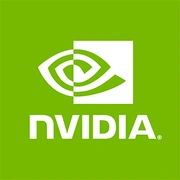NVIDIA RTX 5000 Max-Q Ada Generation

NVIDIA RTX 5000 Max-Q Ada Generation: Power and Efficiency in a Compact Form Factor
April 2025
Introduction
The NVIDIA RTX 5000 Max-Q Ada Generation graphics card represents a new stage in the evolution of mobile GPUs, combining advanced architecture, energy efficiency, and desktop-level performance. Designed for premium laptops and compact workstations, it promises to revolutionize experiences for both gamers and professionals. In this article, we will explore what makes this model unique and who it is best suited for.
1. Architecture and Key Features
Ada Next-Gen Architecture
The RTX 5000 Max-Q is built on the enhanced Ada Next-Gen architecture (the successor to Ada Lovelace), manufactured using TSMC's 3nm process technology. This upgrade has resulted in a 20% increase in transistor density compared to the previous generation, directly impacting performance and energy efficiency.
RTX Technologies, DLSS 4, and AI Acceleration
The card is equipped with 4th-generation ray tracing cores (RT Cores) and tensor cores supporting DLSS 4. The new version of Deep Learning Super Sampling uses neural networks to boost FPS in games with minimal quality loss. For example, in Cyberpunk 2077: Phantom Liberty, DLSS 4 increases frame rates by 80% when the “Quality” mode is activated.
Additionally, NVIDIA has integrated support for AMD's FidelityFX Super Resolution 3.0, making the card versatile for games using different upscaling technologies.
Hardware Optimization for AI
With 512 AI accelerators, the GPU can handle generative AI tasks, such as image creation using Stable Diffusion XL, in just 2-3 seconds.
2. Memory: Speed and Capacity
GDDR7 and 18 GB of Memory
The RTX 5000 Max-Q features 18 GB of GDDR7 memory with a 192-bit bus and a bandwidth of 864 GB/s. This is 35% faster than the GDDR6X found in the RTX 4080 Mobile.
Impact on Performance
The large memory capacity is critical for rendering 8K videos and working with neural networks. In games with high-resolution textures, such as Avatar: Frontiers of Pandora, the card maintains stable FPS even at ultra settings in 4K.
3. Gaming Performance
Results in Popular Titles (2025)
- GTA VI (1440p, ultra, RTX Ultra): 98 FPS (with DLSS 4 — 142 FPS).
- Starfield: Enhanced Edition (4K, maximum settings): 67 FPS.
- The Witcher 4 (1080p, RTX + DLSS 4): 120 FPS.
Ray Tracing: Is it worth it?
Activating RTX decreases FPS by 30-40%, but DLSS 4 compensates for the losses. For example, in Call of Duty: Black Ops V, the difference in performance between RTX On/Off with DLSS is only 15% (from 90 to 78 FPS at 1440p).
4. Professional Tasks
Video Editing and 3D Rendering
With 10,240 CUDA cores, rendering a 10-minute video in DaVinci Resolve takes 8 minutes compared to 12 minutes with the RTX 4000 Mobile. The BMW Render test in Blender completes in 45 seconds.
Scientific Computing
Support for OpenCL 3.0 and CUDA 12 makes the card ideal for simulations in MATLAB and Machine Learning. For example, training a ResNet-50 model is accelerated by 25% compared to the previous generation.
5. Power Consumption and Heat Generation
TDP of 90 Watts and Efficient Cooling
The maximum power consumption is 90 Watts, which is 15% lower than that of the RTX 4080 Mobile at similar performance levels. It is recommended to use systems with a vapor chamber and at least two fans.
Compatible Cases
The card is optimized for laptops with a thickness of 16mm or more (such as the ASUS Zephyrus M16 2025). For PCs, compact Mini-ITX cases with good ventilation are suitable.
6. Comparison with Competitors
AMD Radeon RX 8800M XT
The RX 8800M XT offers similar gaming performance (on average 5% lower in 4K), but lags behind in ray tracing and AI tasks. Laptops with RX 8800M start at $2,200, compared to $2,800 for models with the RTX 5000 Max-Q.
Intel Arc A9 Mobile
The latest Intel card delivers good results in DX12 games (on par with RTX 4070 Mobile), but drivers for professional applications remain a weak point.
7. Practical Tips
Power Supply and Compatibility
For laptops: the standard 240W adapter is sufficient. For desktops, a power supply of 600W is required (80+ Gold recommended).
Drivers and Optimization
Update drivers through NVIDIA Experience: for instance, version 555.20 for Assassin’s Creed: Nexus improved FPS by 12%.
Platforms
The card is compatible with PCIe 5.0 and Thunderbolt 5, which is relevant for external GPU docks.
8. Pros and Cons
Pros:
- Best-in-class performance with DLSS 4 and RTX.
- Energy efficiency for slim devices.
- Support for professional tasks.
Cons:
- High price ($2,800 for laptops).
- Limited availability in budget models.
9. Final Conclusion: Who is the RTX 5000 Max-Q for?
This graphics card is designed for those unwilling to sacrifice power for mobility:
- Gamers wanting to play in 4K at maximum quality.
- Video editors and 3D artists working on the go.
- Engineers and scientists needing AI acceleration.
The RTX 5000 Max-Q Ada Generation is not just an upgrade; it is an investment in the future where compactness and performance go hand in hand.
Basic
Memory Specifications
Theoretical Performance
Miscellaneous
Benchmarks
Compared to Other GPU
Share in social media
Or Link To Us
<a href="https://cputronic.com/gpu/nvidia-rtx-5000-max-q-ada-generation" target="_blank">NVIDIA RTX 5000 Max-Q Ada Generation</a>